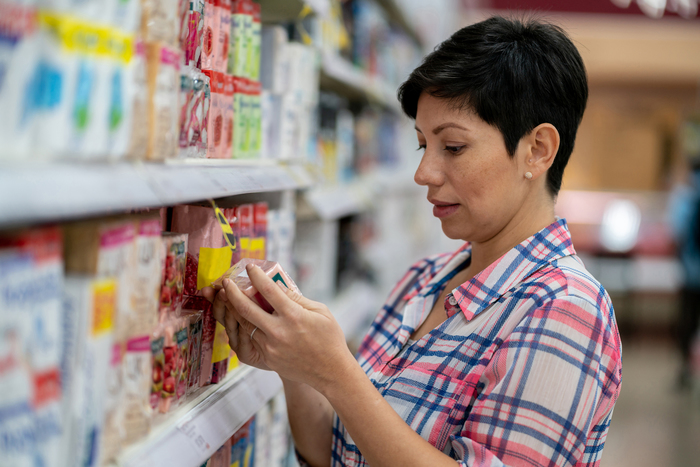Reducing harmful chemicals in our food
Your family’s health may be at risk, no matter where you shop

Our food contains chemicals that may result in serious health risks, especially for young children. Some of these chemicals are purposefully added to food or packaging to flavor, color, preserve, package, process and store our food. Because of a flawed law and weak enforcement, many chemicals are inadequately tested or not tested at all, and others are never even independently reviewed for safety.
Another major concern is contaminants, such as lead and arsenic. While these aren’t intentionally added to our food, they can enter through processing and from environmental sources.
EDF is working to make safer food available for all. We're calling on corporate leaders to improve the safety of the food they sell, and working with allied organizations to strengthen and modernize the regulatory system to ensure hazardous chemicals are removed from the food supply. We do not currently work on pesticides.
EDF's key chemicals of concern in food:
Protecting our food
EDF focuses our efforts where we will have the largest impact: the chemicals that harm young children and that we know we can reduce. Using this strategy, we have prioritized four classes of chemicals: heavy metals (i.e. lead, cadmium, and arsenic), ortho-phthalates, perchlorate, and per- and poly-fluoroalkyl substances (PFAS).
These aren’t added directly to our food but can enter through production (such as during harvesting), processing, or packaging. While the best way to tackle the chemicals may differ, we’re working to determine best practices for testing, managing, and driving down levels of each in our food.
Testing for contaminants in food and its packaging
For some chemicals, the best way to get them out of the food supply is to stop allowing its use. In those cases, EDF is challenging the current regulatory system.
A broken system
While the Food Additives Amendment of 1958 gives the Food and Drug Administration oversight of chemicals added to our food directly as ingredients and those that end up in food as contaminants, the agency lacks the tools and authority to do its job.
For FDA to ensure our food is safe, we must:
End secrecy: The Generally Recognized as Safe (GRAS) loophole allows companies to secretly decide on the safety of chemicals in our food — without FDA's review or the public's knowledge. Congress needs to create a more streamlined, public process for FDA to make safety decisions and encourage innovation.
Use modern science: When FDA reviews chemicals in our food before they are used, it makes our food supply safer. But the agency needs to use the most modern science to do the best job. That doesn’t happen now.
Ensure existing chemicals are safe: Thousands of chemicals were approved by FDA decades ago, when we had far less understanding about their impacts on human health. FDA needs to reassess their safety. Congress needs to provide FDA with the tools so the agency can get the information it needs to set priorities and make decisions about the 10,000 chemicals in our food.
Consumer concerns about chemicals in food are mounting. In FDA's absence, food manufacturers and grocers are beginning to respond, but the need is urgent for regulatory changes that ensure our food is safe.
Resources
- We are what we eat: Regulatory gaps in the United States that put our health at risk
- Navigating the food additive regulatory program
- Looking back to look forward: A review of FDA's food additives safety assessment and recommendations for modernizing its program
- Data gaps in toxicity testing of chemicals allowed in food in the United States
- Conflicts of interest in approvals of additives to food determined to be generally recognized as safe. Out of balance
- Brain drain: The cost of neglected responsibilities in evaluating cumulative effects of environmental chemicals










